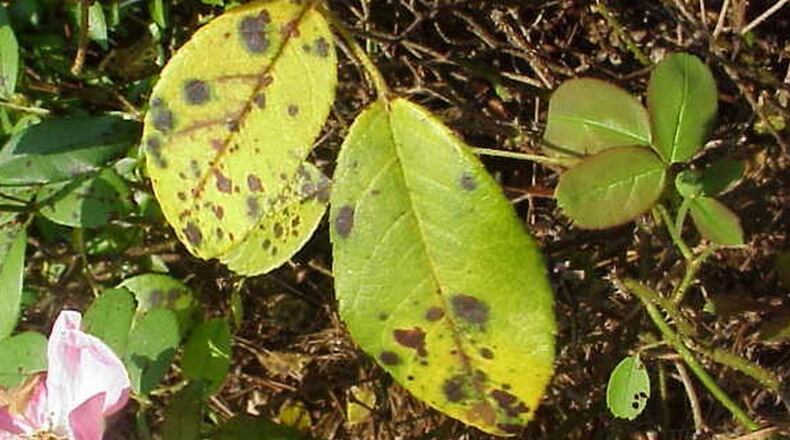Q: I believe my unhappy roses have black spot disease. What should I do?Christie Merrick, email
A: Black spot disease can rapidly make a rose raggedy. You can prevent the disease from affecting new leaves by spraying with a rose fungicide. The best practice is to rotate between at least two different fungicide chemicals. Propiconazole (Infuse), chlorothalonil (Daconil) and tebuconazole (Bioadvanced All-in-One) are commonly available. Follow label directions exactly. If you haven't fertilized, you should do that now to encourage new growth.
Q: I have a beautiful live oak in my yard. For five years, I have been battling oak saplings popping up in the landscape bed around it and in my grass as well. My landscaper has used Roundup in an effort to kill them, but they are persistent!Shannon Gray, Savannah
A: My first question is whether these sprouts are coming up from your tree roots or from acorns. If they are coming up from the roots of the big live oak, you risk killing it if you spray the sprouts with weed killer. You can dig up a few to find their source. Even if most of these sprouts came from acorns, I still would not take the risk with herbicide. My preference would be to mow them down in the lawn and chop them down in your beds. I do not recommend using weed fabric to prevent the sprouts. Sprouts coming from tree roots will penetrate from below and acorn sprouts will grow in the mulch.
Q: My fiddle leaf fig started out really small, and now it's hitting the ceiling! Where will it go from here?Allison Smith, Senoia
A: If you give your fiddle leaf fig enough space and light, it will grow 40 feet tall! My guess is that's not what you want. You can prune it to just about any height and it will recover. The best place to make a cut is above a strongly growing leaf. You can take the leaves that are removed and make a new fig plant from each one. My neighbor, Dr. Christine Callaway, says that she clips a leaf where it attaches to the stem and rolls it lengthwise. She sticks the bottom 2-3 inches of the leaf in a glass jar filled with water. Placed in a sunny window, she says, the leaf will make roots in six weeks. The leaf can then be removed from the water and gently planted into a pot filled with potting soil. Keep it in a window for eight more weeks. You'll see a new leaf grow at the base of the original leaf and more will follow.
Q: I planted lilac cuttings I got from my mother's yard in Rhode Island, but they did not bloom. Are there Southern lilacs that look and smell like the ones of my childhood?Sandy Feit, Dunwoody
A: Different lilac varieties are adapted to different parts of the country. I've had good success with 'Angel White' and 'Dark Knight'. Southern lilac details at bit.ly/GAlilac.
Listen to Walter Reeves Saturday mornings on News 95.5 FM and AM750 WSB. Visit his website, www.walterreeves.com, follow him on Twitter @walterreeves, on Pinterest, or join his Facebook Fan Page at bit.ly/georgiagardener for more garden tips.
About the Author
The Latest
Featured

